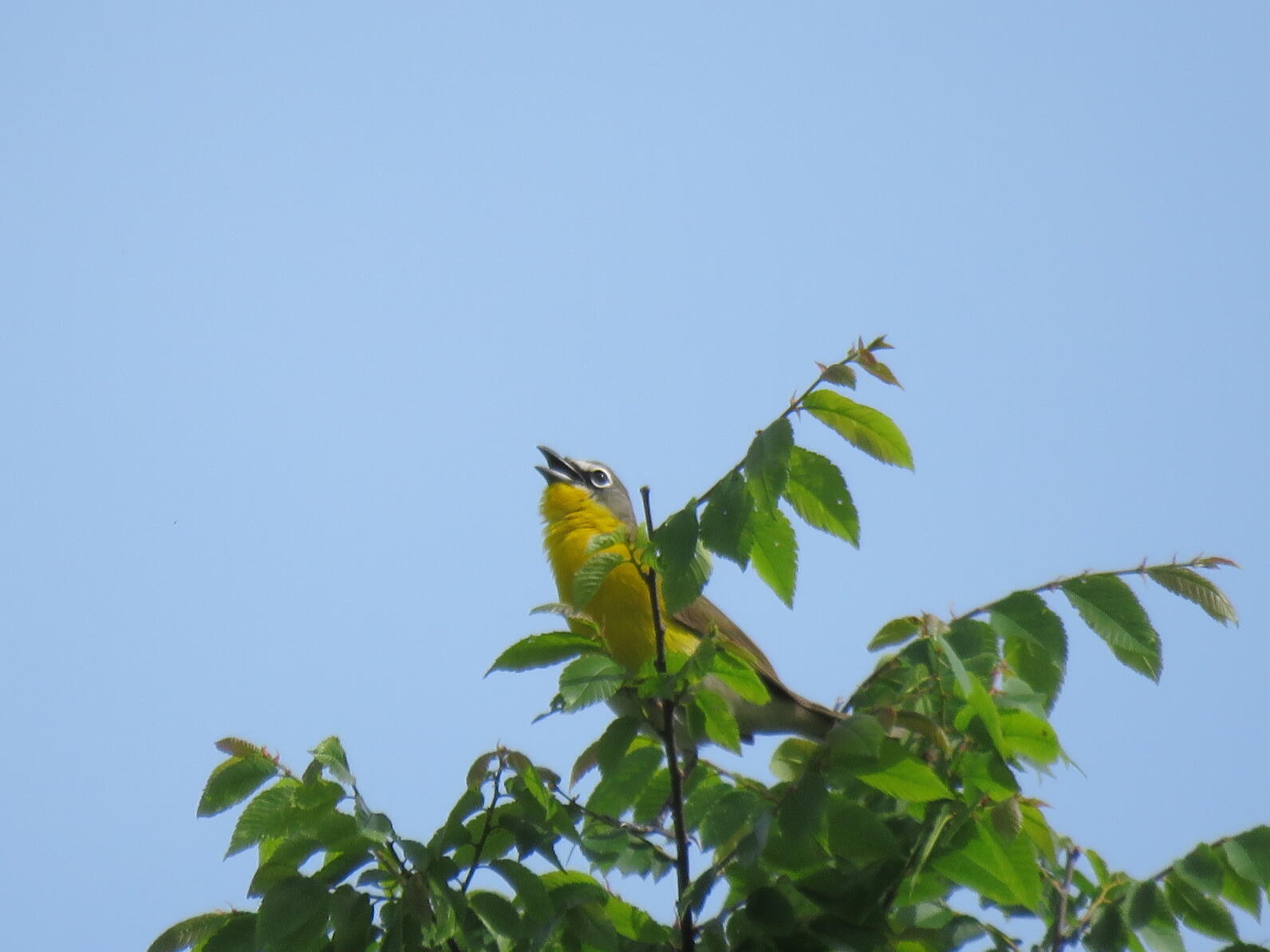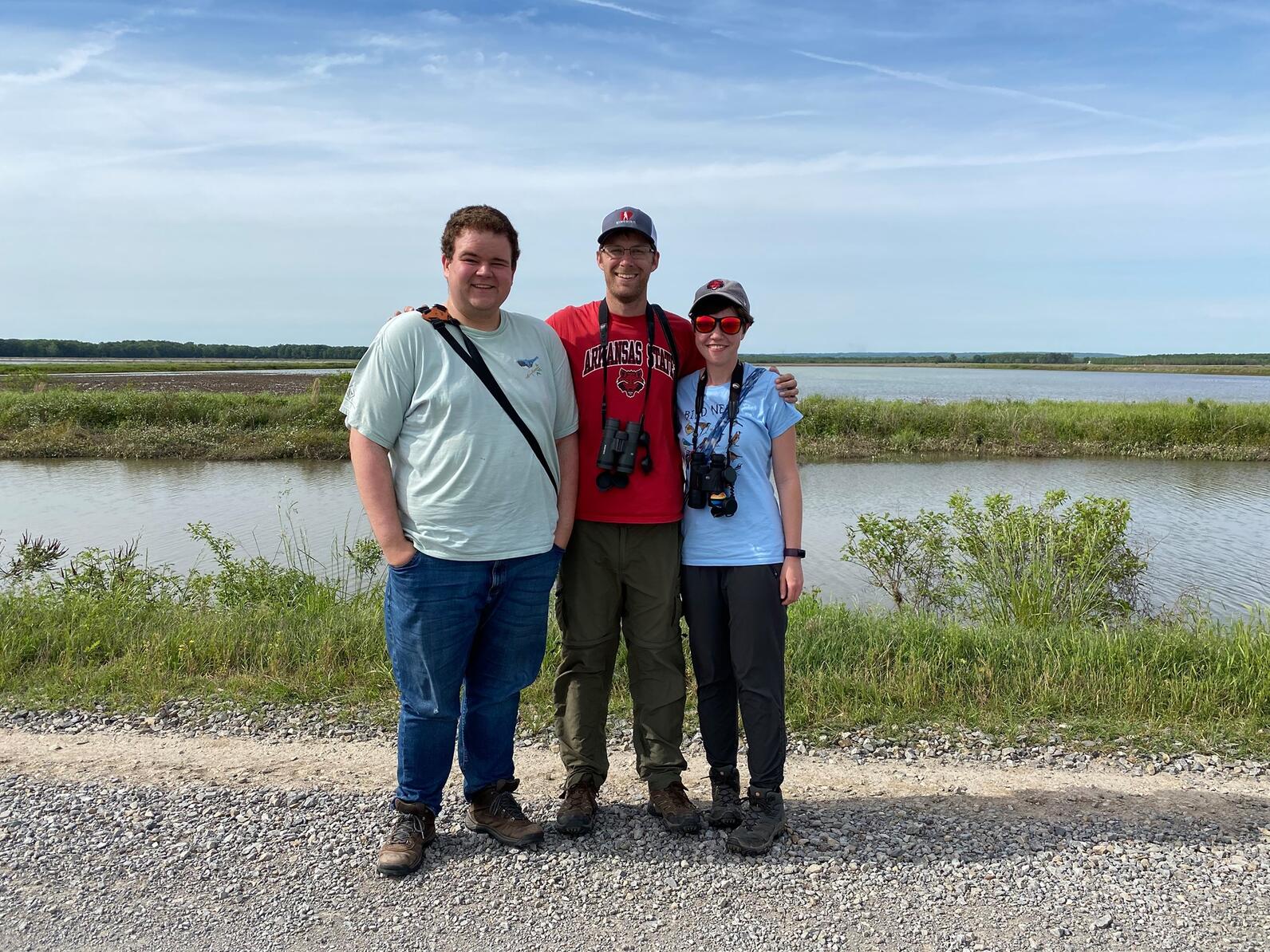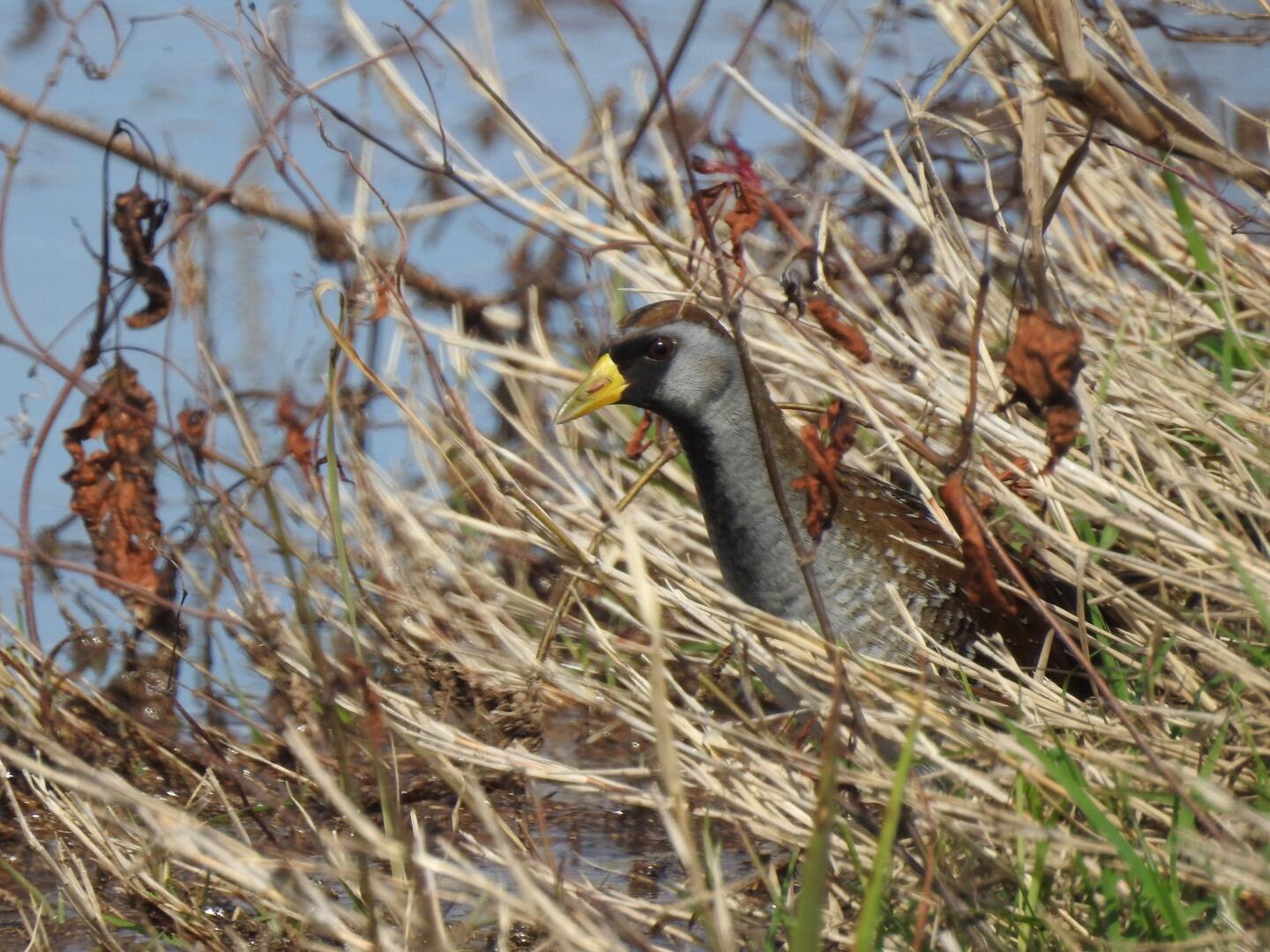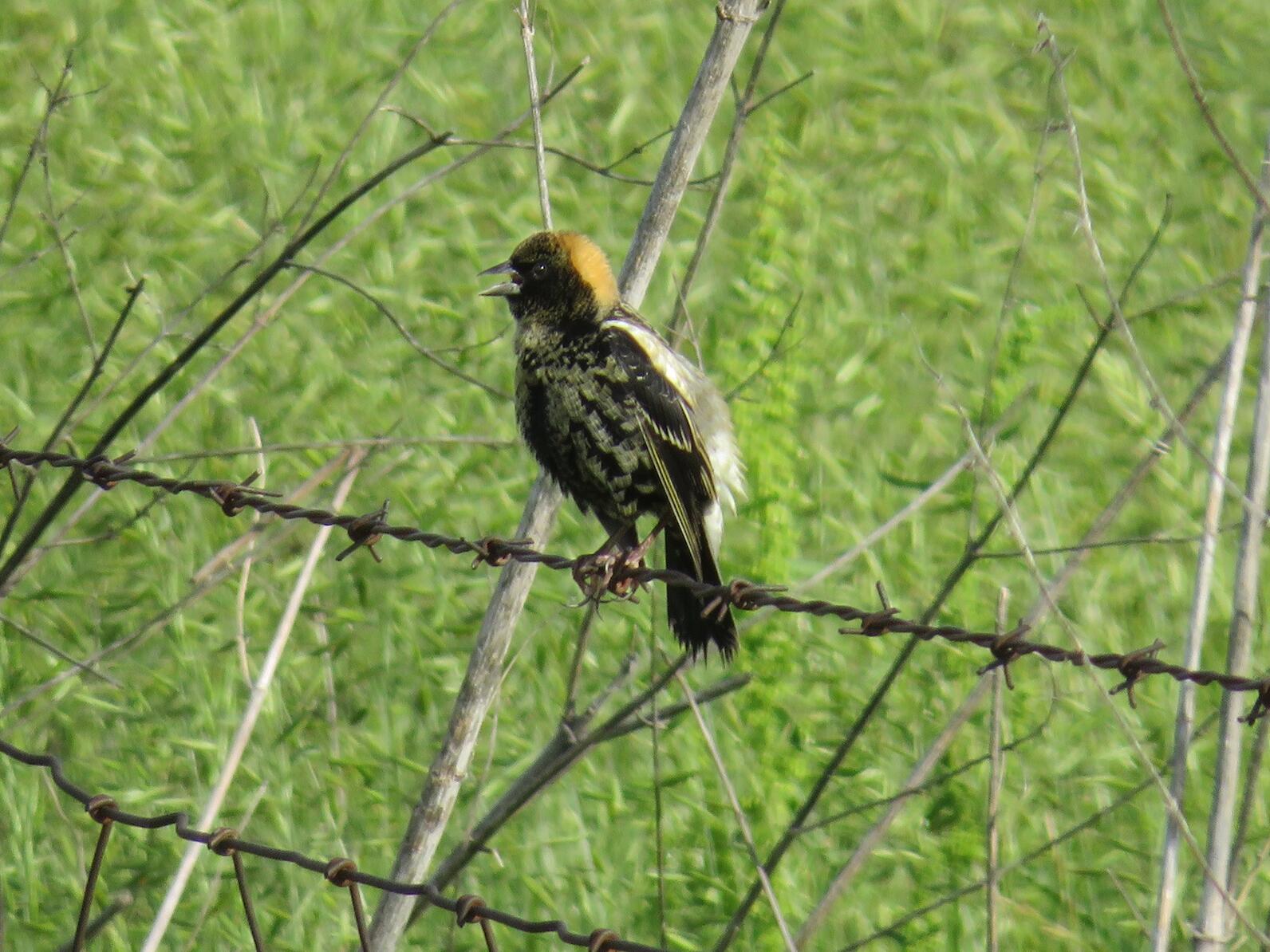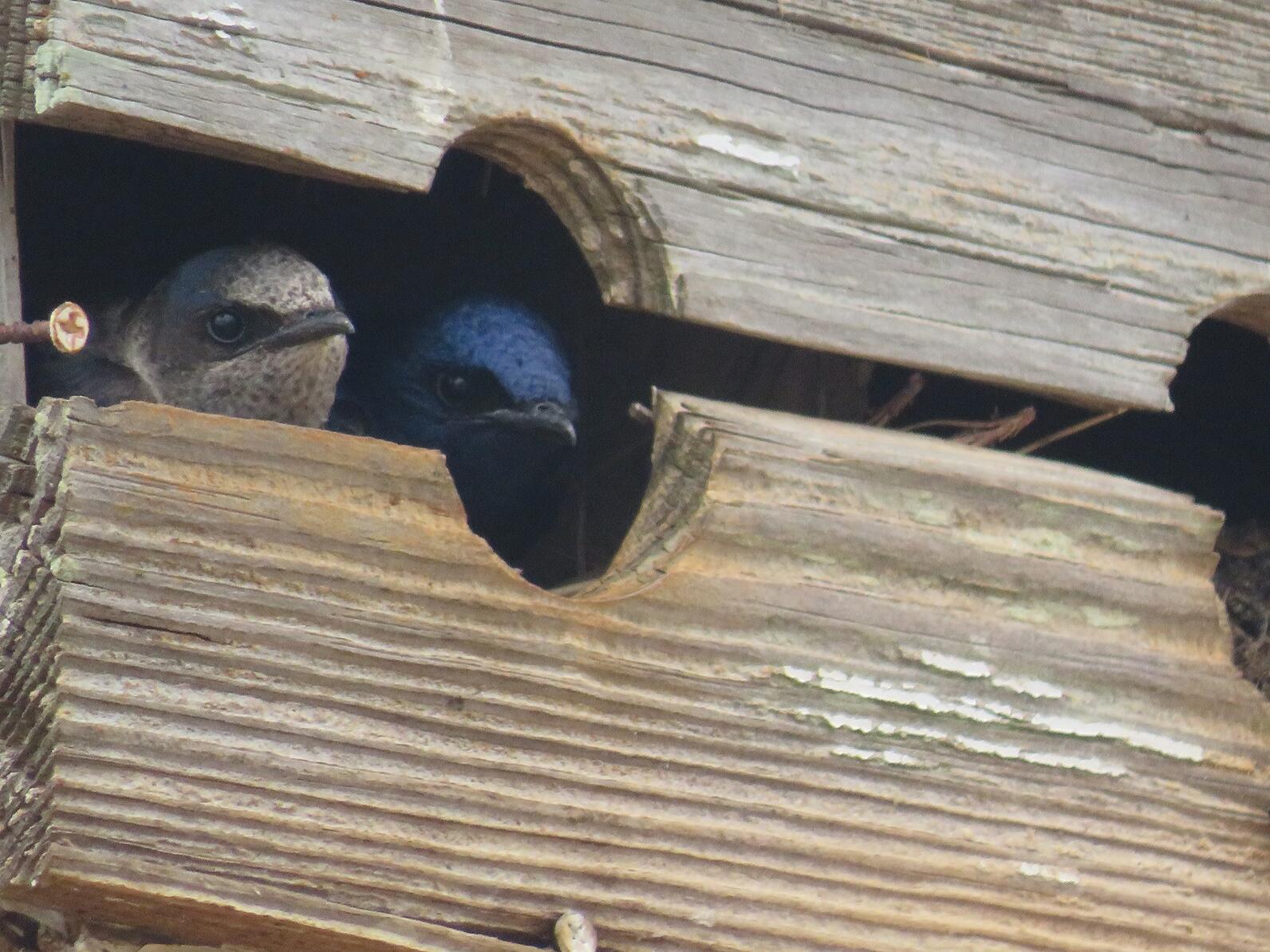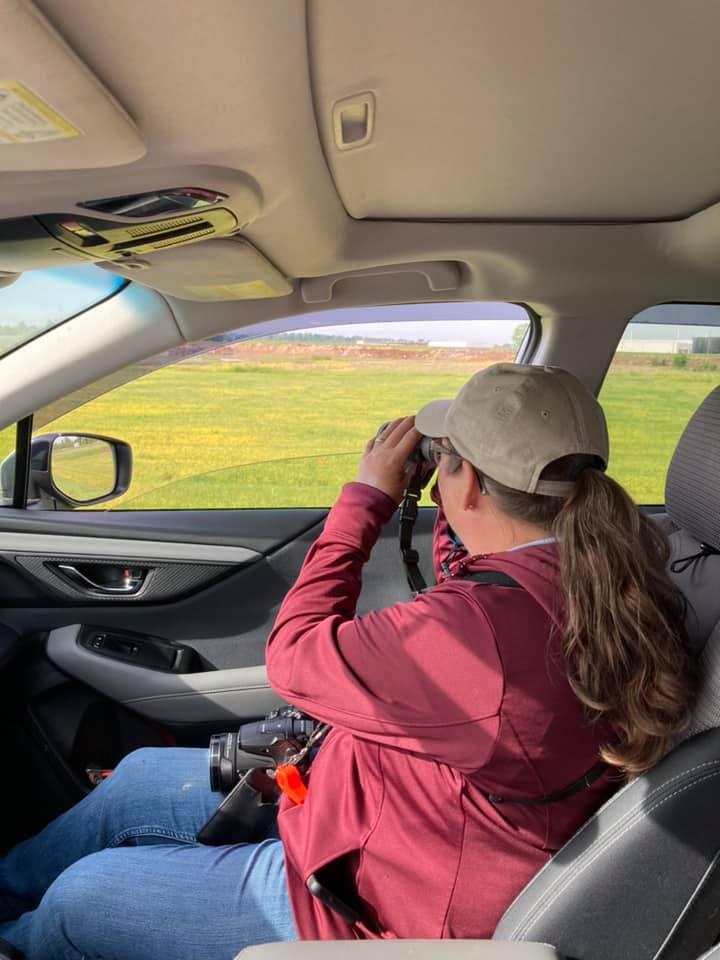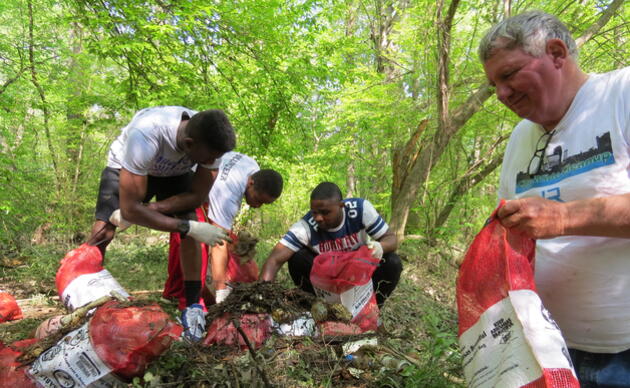Audubon Arkansas's 2021 BirdLR Birdathon once again took the COVID-19 pandemic into account. Some teams chose to bird together, others remained split by geography, while others chose a hybrid of the two. It is my hope that next year it’ll be safe to re-enact the rule that all team members bird together; it evens out the playing field that way.
This year we had a record high of 10 teams participating, including our first entry in the new Backyard team category. Eager to take advantage of spring migration and to see as many species as possible, our Birdathon birders ranged across central Arkansas; in all four corners; and even in Iowa!
For our backyard birding team, the GeoBirbs [a birb is a bird that is funny, cute, or silly in some way], the Birdathon provided a great excuse to enjoy their native plant yard instead of doing yard chores. Their highlight was an American Redstart, which was Katherine Knierim’s 100th species for the year. After brunch, they spotted a black and white bird in the canopy, which turned out to be the first Blackpoll Warbler for their yard! They tallied 32 species, which is impressive for a suburban yard.
The GirlyBirders roamed around the greater Little Rock area, racking up forest and shrubland birds at Pinnacle Mountain State Park and Ranch North Woods Preserve. They had Cliff Swallows at Cook’s Landing. Like many other teams, they made the obligatory stop at the Port Authority for Western Kingbirds and Great-tailed Grackles. A highlight was a pair of Painted Buntings along Frazier Pike. They ended with 69 species.
Audubon Society of Central Arkansas’s team leader Karen Holliday was unable to lead a caravan of birders but she did manage to get some birding in while visiting friends in Carroll Co. Her highlight was a late Brown Creeper. Two other ASCA members birded on their own as well. Altogether they tallied 70 species.
Pulaski Chicks Love Birds spent the day driving around southeast Pulaski Co. They crossed paths with hundreds of Bobolinks as well as families of Black-bellied Whistling-Ducks. A highlight was a couple of Upland Sandpipers outside of Scott, which is rare for Pulaski Co. They tallied 84 species.
Team M. Gidonax had a blast. While Matt Gideon covered Newton Co., Devin and Jennifer Moon toured Jefferson, Ouachita, and Columbia Counties. Highlights for the Moons include an American Bittern out in the open in a Pine Bluff wetland, and a reliable Inca Dove in McNeil. While tallying 114 birds, they tallied quite a few insects, herps, and wildflowers along the way.
We Caracarabout Birds once again left Little Rock early to be at Craighead Forest Park in Jonesboro by dawn. And once again it paid off with 19 species of warblers! After stopping at Bald Knob NWR for shorebirds and waterfowl, they relocated a Black-billed Cuckoo seen earlier in the day along the Searcy bike trail. Their last new bird of the day was a lingering Common Goldeneye at the Big Dam Bridge in Little Rock. They saw-a-saw-a 121 species.
Three members of Corvids not COVID saw the sunrise and a myriad of migrants at Bell Slough WMA. Later, they had two Yellow-headed Blackbirds and a Swainson’s Hawk in Lollie Bottoms. Meanwhile, Michael Linz and Patty McLean picked up warblers and White-crowned Sparrows at their new place in White Co. Collectively, they had 135 species.
Jonesbirders on the PROW! split up into three groups to cover three different ecoregions. Alix Matthews stayed in the northeast where she had warblers galore at Craighead Forest Park, as well as all four Catharus thrushes. Cayce Guy went west into the Ozarks where he was able to check most of the forest breeding birds while enjoying crystal-clear creeks and beautiful bluffs. Kevin Krajcir, Em Donahue, and Alex Worm drove down into the Delta, starting their day by listening to owls in the Pendleton Recreation Area campground. Waterbirds such as Purple Gallinule, Anhinga, and Sedge Wren were at Arkansas Post. More marshbirds—Sora and Virginia Rail—were added along with shorebirds at Bald Knob NWR. They also checked on one of the Western Kingbird x Scissor-tailed Flycatcher hybrids that Alex studies.
The Thrashers began their day in the Flatside Pinnacle portion of Ouachita National Forest, picking up species such as Worm-eating Warbler. They ended it at Bald Knob NWR, seeing shorebirds, wading birds, and waterfowl. They had 139 species, the most for a team that stayed together all day.
As for the Early Birds and the Worms, Samantha and I left the house at 3 AM and ended at 10 PM. An early highlight was a singing Veery at Bell Slough WMA. A foray to Atkins Bottoms paid off with a pair of Trumpeter Swans and Swainson’s Hawks. When we discovered that Raft Creek Bottoms WMA was flooded we motored to Saul’s Fish Farm where in the waning light we found four new species—Gadwall, Redhead, Ruddy Duck and American Coot. Our last bird was a Common Nighthawk heard while enjoying dinner on our front porch. Jeremy Chamberlain and Heather Laferte birded southwest AR. The morning around Millwood Lake was productive, including Black-bellied Whistling-Ducks and Heather’s life Cave Swallow. At Pond Creek NWR Swainson’s Warblers were singing in spades, and a huge heronry took their breath away. Heather also saw her life Wilson’s Phalarope at the Magnolia Wastewater Treatment Plant. In Iowa, Seth Chamberlain added 20 species to our team list, including three you can’t find in AR in May—Lesser Black-backed Gull, Ring-necked Pheasant, and Black-capped Chickadee. We had 170 species.
Altogether teams tallied 212 species. Of those, 46 were seen by only one team, including Trumpeter Swan, Northern Pintail, Common Goldeneye, Inca Dove, Greater Roadrunner, King Rail, Upland Sandpiper, Red-cockaded Woodpecker, Olive-sided Flycatcher, Cave Swallow, Brown Creeper, and Cerulean Warbler. Almost every team had a unique species. Early Birds won for the greatest number of species among the field teams, while the GeoBirbs won for most yard birds seen.
Audubon Arkansas thanks all 33 birders for devoting their time and talent to the event, and for helping to raise funds and friends. Together we raised over $10,500 for conservation and education programs at the Little Rock Audubon Center. I removed my team from the competition of most money raised, so that means The Thrashers won this year! Time to start strategizing for next year!
